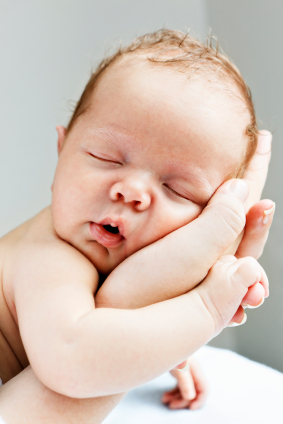Contents
- What is gastro-oesophageal reflux?
- What complications can occur with GORD?
- What makes GORD happen?
- How do I know if my child has GORD?
- How is GORD diagnosed?
- How is GORD treated?
- Is surgery needed for children with GORD?
- What does surgery involve?
- Are there any problems after the surgery?
- Are there alternatives to the Fundoplication operation?
What is gastro-oesophageal reflux?
Gastro-oesophageal reflux (GOR) occurs when contents from the stomach travel back into the gullet (oesophagus). GOR is a very common and harmless thing to see in newborn babies and infants but as the child grows and matures it improves. Many parents will have experienced frequent “positing” in the early life of their baby that then resolves as they grow. Sometimes the stomach content comes out of the mouth and be seen as vomiting but not all vomiting is abnormal or the result of GOR. Reflux is a naturally occurring event in all people but when it leads to complications it is called gastro-oesophageal reflux disease (GORD).
What complications can occur with GORD?

The stomach produces acid to help digest food. The stomach is used to having acid in it but the gullet is not and exposure of the lining of the gullet to acid can lead to irritation, bleeding and in prolonged cases scarring and narrowing leading to difficulty with swallowing. Adults and older children can experience the discomfort of acid in the gullet and this is referred to as indigestion or heart burn. Children may not be able to express this but a symptom of GORD in infants may be distress or discomfort especially after meal times.
GORD can also cause problems with the lungs in children. This can cause or worsen rare forms of asthma or lead to repeated lung infections especially if the child’s swallowing mechanism does not work normally. GORD can rarely be so severe that the child can’t keep enough of its meal in its tummy and thus fail to grow normally. Inability to keep medicines in the tummy may also make it difficult to effectively treat medical conditions such as epilepsy. Acid reflux into the mouth can lead to bad breath and attack the enamel of the back teeth leading to premature tooth decay.
What makes GORD happen?
There is natural resistance in the bottom of the gullet to prevent GOR occurring. In babies this resistance is low but matures with time. In some children reflux can occur because of certain forms of cerebral palsy that affect the natural mechanism and working of the gullet and stomach. Children who have allergies that affect the intestine can also have GORD as a symptom. Some children have medical conditions that are known to have a high rate of GORD (e.g. cystic fibrosis). Some children with no other medical condition have weakness in the muscle at the end of the gullet that does not mature with time. Often no cause for this can be found.
How do I know if my child has GORD?
If you are concerned about any of the above symptoms you should see your health visitor or family doctor. They will discuss the symptoms with you. They may suggest some simple treatment with you or they may decide that it would be sensible to refer you to a paediatrician for further assessment.
How is GORD diagnosed?
Special investigations are usually not needed and your doctor or paediatrician will be happy with the diagnosis and suggest treatment based on your child’s symptoms.
However, further investigations may be needed if:
- Symptoms are severe.
- There are chest symptoms which are difficult to treat and GORD may be a possible cause.
- There is no improvement with medication and surgery may be being considered.
The investigations that are used to diagnose GORD include:
A contrast study (previously referred to as a barium or dye test)
The radiology doctor will ask your child to drink (or have through a tube if they are unable to drink) a harmless liquid which, when x-rays are taken, shows the inside of the gullet and stomach. If GOR occurs the doctors can see the contrast travelling back into the gullet.
A pH test
This involves inserting a tube into the child’s gullet that remains in place for 24 hours. This measures acid travelling back into the gullet and will establish how much reflux is occurring. A newer technique called impedance can now measure any liquid that travels back from the stomach regardless of whether it is acid or not.
Endoscopy
The doctor may need to see the lining of the gullet to check for damage and irritation. This is done with a flexible camera. Your child will need to come to hospital and have this procedure performed under anaesthetic or deep sedation.
How is GORD treated?
Simple advice
Some simple manoeuvres can often make a significant difference in terms of making GOR better. These are as follows:
- Ensuring you have winded your baby as effectively as you can.
- Avoiding excessive movement of your baby after feeds.
- Slight elevation of the head end of the cot when you baby is asleep.
- Using some special formulas that are designed for GOR in babies.
Medicines
Some simple medicines can chemically neutralise acid in the stomach and thicken the stomach content slightly, which helps to prevent GOR.
Some medicines try and make the stomach empty its contents into the intestine faster so lessening the liquid in the stomach that can reflux (e.g. Domperidone).
Some medicines act on cells in the lining of the stomach to make them produce less acid (e.g. Ranitidine, Omeprazole).
Your paediatrician may suggest other forms of drug treatment if a specific cause of the GORD has been found.
Is surgery needed for children with GORD?
Fortunately surgery is required in only a very small number of children. Your paediatrician may consider referring your child to a paediatric surgeon to consider surgery if:
- Your child’s symptoms show no signs of improvement and they are on the highest doses of the medications.
- Your child is experiencing severe chest problems that in rare cases can be life threatening.
- Your child’s symptoms of GORD may be potentially life long in which case surgery can be considered as an alternative to taking drugs for years to come.
What does surgery involve?
The most common operation that is performed for GORD in children is called a Nissen Fundoplication. This involves wrapping the top part of the stomach around the lower part of the gullet to form a type of one-way valve. Children, if they are able, can still swallow normally but when things have reached the stomach they cannot reflux back into the gullet (Figure 1). It is now almost exclusively performed in infants and children with key-hole surgery. Figure 2 shows where the tiny scars are normally situated on the tummy. Recovery is quick and reliable and most children can be discharged within 3 to 4 days after the operation. Check with your surgeon to ensure that he has experience with key-hole surgery for this operation.
Are there any problems after the surgery?
Ask your surgeon to go through the risks and benefits of the surgery with you. They should mention the following things:
- Children will not be able to be sick after the surgery and usually can’t burp very well. They should avoid fizzy drinks.
- Children may have some early difficulty in swallowing that settles after surgery. If it is prolonged further treatment may be required.
- Children have slightly smaller stomachs after the surgery and may prefer to have smaller, more regular meals.
- It is known that the valve mechanism can weaken with time and a small number of children may need to have the operation performed again to regain control of the GORD.
Are there alternatives to the Fundoplication operation?
You should ask your surgeon to discuss alternative procedures that, in a very small number of children, may be possible.
Gastro-oesophageal reflux disease (acid reflux). The regurgitation of acidic fluid from the stomach into the oesophagus.
Full medical glossary

